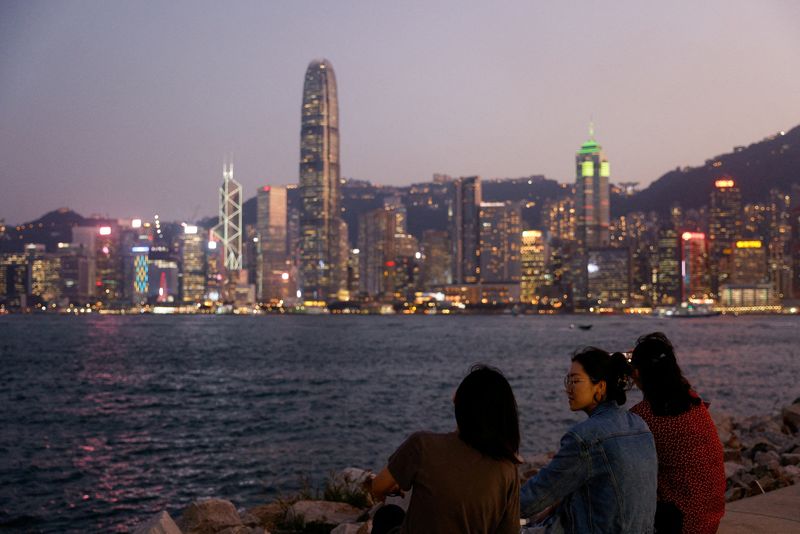HONG KONG (Reuters) - Hong Kong's retail sales posted the biggest percentage rise in 13 years in February as economic sentiment improved alongside a sharp rebound in visitor arrivals and low figures in the year-earlier period, government data showed on Friday.
February retail sales grew 31.3% from a year earlier in value terms to stand at HK$33.1 billion ($4.22 billion), the biggest percentage growth for a month since February 2010 when it grew 35.8%.
That also compared with HK$36.2 billion in January, when retail sales were revised to an increase of 6.9% from a year earlier.
Strict COVID-19 restrictions have weighed on Hong Kong's economy since early 2020, grinding tourism to a halt and battering sales at bars, restaurants and shops.
All border checkpoints were reopened fully in early February while the city dropped its COVID-19 mask mandate from March 1 in a move to lure back visitors and restore normal life more than three years after stringent rules were first imposed in the financial hub.
The government also launched a promotional campaign earlier this month called "Hello Hong Kong" to bring back tourists and businesses.
"The retail sector performance will continue to benefit from the recovery of private consumption and inbound tourism," a government spokesperson said.
In volume terms, retail sales in February increased 29.6% from a year earlier. That compared with 5.1% growth in January. It was the biggest growth since February 2021, when it was 31%.
Hong Kong has been battered by its own pandemic measures and spillover from China's zero-COVID policies, but recovering consumer spending on the mainland and a rebound in travel are expected to help the city's economy this year.
The Asian financial hub's economy is expected to grow 3.5%-5.5% this year after shrinking 3.5% in 2022.
Tourist arrivals in Hong Kong in February soared nearly 557 times from a year earlier to 1.46 million, exceeding one million for the first time in three years. That compared with 2,626 visitors in February 2021 and about 70 times growth in January to 498,689.
Among the arrivals, mainland visitors jumped to about 1.11 million in February from 280,525 in January, while non-mainland visitors rose to 353,316 in February from 218,164 in January, Hong Kong Tourism Board's data showed.
The city's seasonally adjusted unemployment rate eased to 3.3% in the December to February period, from 3.4% in the November to January period.
In February, sales of jewellery, watches, clocks and valuable gifts, which before the pandemic were mostly to tourists from mainland China, jumped 128.6% from a year earlier, following 22.5% growth in January, data showed.
Benefiting from the travel relaxation measures, jewellery chain operators Chow Tai Fook said its same store sales growth for Hong Kong and Macau increased 70% on year for January-February, while Chow Sang Sang's sales in the two cities were up about 89% for the period from Jan 1 to March 15.

Sales of clothing, footwear and accessories in February grew 104.1% on the year after a 15.6% increase in January.
Online retail sales in February decreased 4.1% year-on-year in value terms, compared with a 3.4% drop in January. ($1 = 7.8499 Hong Kong dollars)